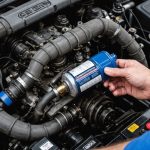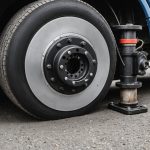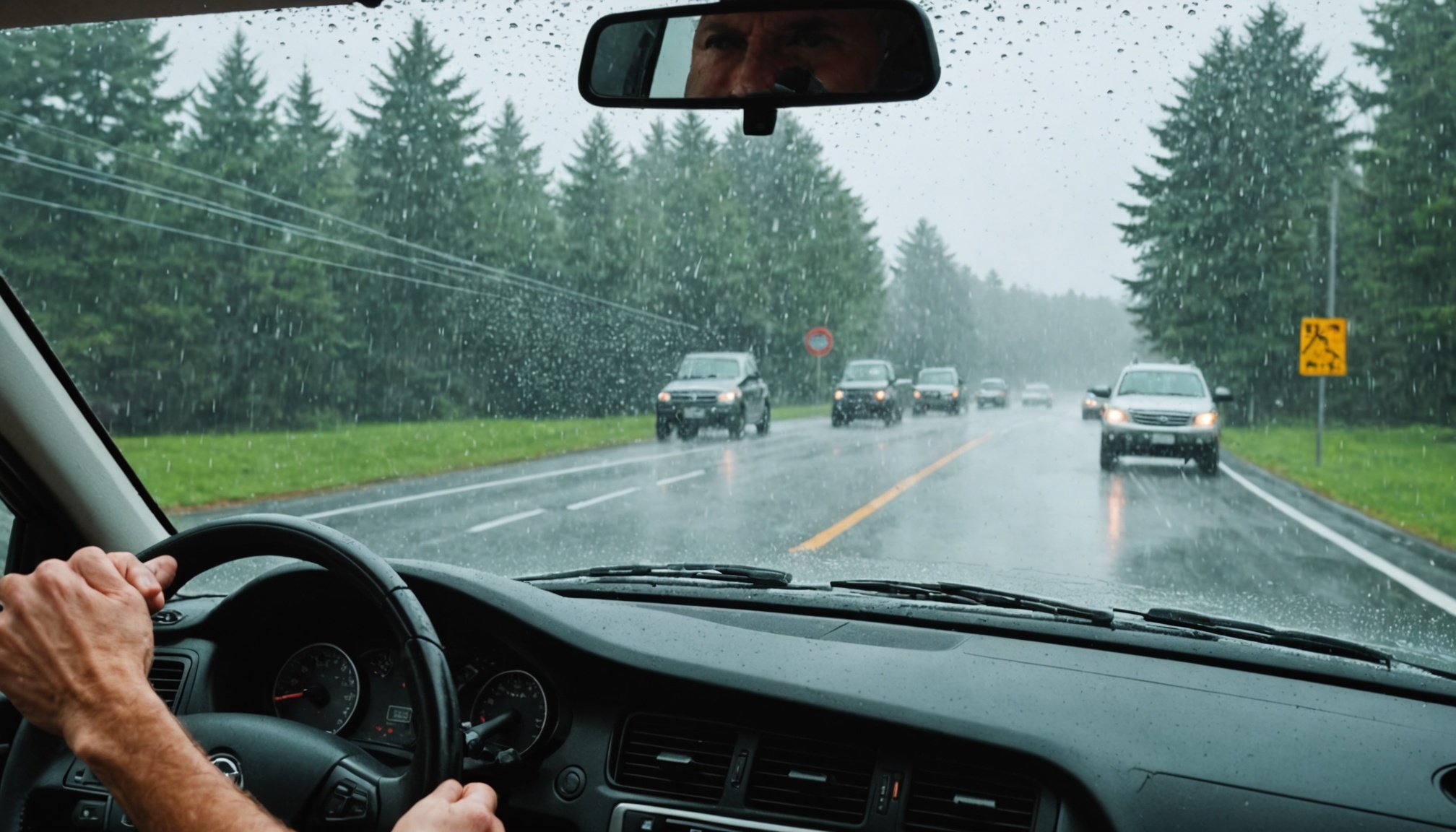Importance of Replacing Windshield Wipers
Maintaining windshield wipers is crucial for ensuring optimal visibility in storms. Over time, wipers wear down due to harsh weather conditions, UV exposure, and general use. This deterioration compromises the wipers’ ability to clear rain, snow, and debris effectively. Consequently, this can severely hinder a driver’s ability to see clearly.
Worn windshield wipers can create streaks, skips, and even cause a distracting noise, which can be annoying but, more importantly, dangerous. The impact of worn wipers on visibility can turn a minor inconvenience into a major safety hazard, particularly during heavy downpours or snowstorms. The reduced visibility can increase the likelihood of accidents, putting both the driver and others on the road at risk.
Additional reading : Essential Tips for Preparing and Sustaining Your Vehicle”s EGR System for Peak Performance
Regularly replacing wipers is not just about maintaining comfort; it is about safety. A proper windshield wiper maintenance schedule ensures wipers are always in excellent condition, ready to handle unexpected weather conditions. Manufacturers typically recommend changing wipers every six to twelve months, depending on use and environmental exposure. Diligence in following a routine replacement schedule can significantly enhance visibility in storms, thereby reducing safety risks.
Choosing the Right Windshield Wipers
Selecting the best windshield wipers is crucial for ensuring clear visibility in all weather conditions. Identifying the right type can be daunting given the various options available.
Topic to read : Essential Guide: Safely Replacing Your Rearview Mirror in ADAS-Equipped Vehicles
Factors to Consider
When selecting windshield wipers, consider the material quality and durability. Look for wipers made from robust materials like rubber or silicone, as they offer better longevity. An aerodynamic design is critical for maximum efficiency, reducing wind lift while driving at high speeds. Visibility-enhancing technologies, such as water-repellent coatings, can also be beneficial.
Best Wiper Types for Stormy Conditions
For stormy conditions, beam-type wipers are highly recommended. Their frameless design allows for even pressure distribution along the blade, providing clear visibility during heavy rain. Additionally, hybrid wipers, which combine the efficiency of beam wipers with the stability of conventional types, are excellent for harsh weather.
Recommended Brands and Products
Brands like Bosch, Rain-X, and Michelin consistently receive high marks for their durability and performance. Products with integrated hydrophobic technology are praised for their ability to repel water effectively. Opt for models with high-quality rubber or silicone blades to ensure your view remains unobstructed, regardless of the conditions.
Step-by-Step Guide to Replacing Windshield Wipers
Replacing windshield wipers is simple with the right tools and guidance. To begin, gather essential tools and materials like new wiper blades, a screwdriver, and possibly needle-nose pliers. These are typically required for most installation instructions.
Before starting, ensure that the new wipers are compatible with your vehicle’s wiper arms and blades. Ensuring proper fit prevents poor performance during heavy rains, which could impair visibility, potentially leading to dangerous situations.
Detailed steps:
- Lift the wiper arm away from the windshield until it holds itself up, which is often a position it locks into.
- Locate the release mechanism where the blade meets the arm. This might be a small tab you need to press down or a hook you need to slide the blade out of.
- Carefully remove the old blade, avoiding any sharp movements which might snap the arm back onto the windshield.
- Align the new wiper blade with the arm fitting. Insert it securely by reversing the removal process, ensuring any clips or tabs snap into place.
- Repeat these steps for the other wiper and gently lower the arms back onto the windshield.
Always double-check that all components are firmly attached before completing the replacement process.
Safety Precautions During Replacement
Replacing wipers may seem straightforward, but ensuring wiper replacement safety is crucial. For a safe installation, begin by turning off the vehicle completely. This precaution prevents accidental activation, which could lead to injuries or damage.
Once the vehicle is off, the next step is to secure the wipers. Installation safety tips suggest elevating the wiper arms gently and ensuring they are stable. This minimizes the risk of snapping back, which could crack your windshield or harm you.
When it comes to removing and installing wipers, handling them with care is essential. Gently disengage the old wiper blades from the arm following the manufacturer’s instructions.
Proper disposal methods for old wipers are also important. Rather than discarding them irresponsibly, consider recycling programs or drop-off centers at automotive shops. This ensures environmentally responsible disposal.
By following these safety steps, you ensure a smooth and accident-free wiper replacement experience. Taking these precautions not only protects you but also maintains the integrity of your vehicle. Whether you’re a car enthusiast or just maintaining your vehicle, caution and mindfulness during replacement are key.
Maintenance and Care for Windshield Wipers
Taking good care of your windshield wipers is vital for keeping your view clear and safe while driving. Here are some wiper maintenance tips to help you maintain them in top condition:
Regular cleaning of the wiper blades and windshield is crucial. Dirt and debris can accumulate on the blades, causing them to wear out quicker and leading to streaks. To prolonging wiper life, use a mild detergent and a soft cloth to clean the blades and the windshield regularly. This practice helps ensure that the wipers work smoothly and efficiently.
Frequent inspection of your wipers for any signs of damage or wear is essential. Look for cracks, fraying, or hardening of the rubber. Damaged wipers can affect visibility, so replacing them promptly is necessary for optimal performance.
Consider seasonal maintenance tips to further extend the life of your wipers. For instance, during winter, prevent the wipers from freezing to the windshield by lifting them overnight or using a windshield cover. In hotter climates, park in shaded areas to avoid excessive heat exposure that can cause the rubber to harden and crack.
By following these simple steps, you can keep your wipers functioning effectively and increase their longevity.
Troubleshooting Common Windshield Wiper Issues
Addressing windshield wiper problems with precision can save you both time and frustration. Understanding how to tackle these common wiper problems can enhance your driving safety and visibility during adverse weather conditions. Below, we explore some of the most frequently encountered issues.
Streaking or Smearing Wipers
A frequent issue with windshield wipers is streaking or smearing, often caused by dirt or debris on the blades. Cleaning the blades with a damp cloth can remove most build-up. If cleaning doesn’t resolve the problem, inspect the wiper blades for signs of wear or damage.
Wipers Not Making Full Contact
When your wipers fail to make full contact with the windshield, it may be due to a bent arm or a misaligned blade. Check the alignment and manual adjust the arm if necessary. Replacement of the wiper blades might be required if they are unable to cover the windshield effectively.
Noisy Wiper Operation
Noise during operation is typically a result of hardened or uneven wiper rubber. Addressing this common wiper problem involves checking if the blades are aging and need replacement. Wiper troubleshooting in such scenarios should include examining the blade tension on the windshield’s surface and ensuring it is neither too loose nor too tight.
When to Seek Professional Assistance
In case these solutions don’t restore functionality, or if wiper troubleshooting seems beyond your expertise, consult a professional for more complex repairs or replacements.











